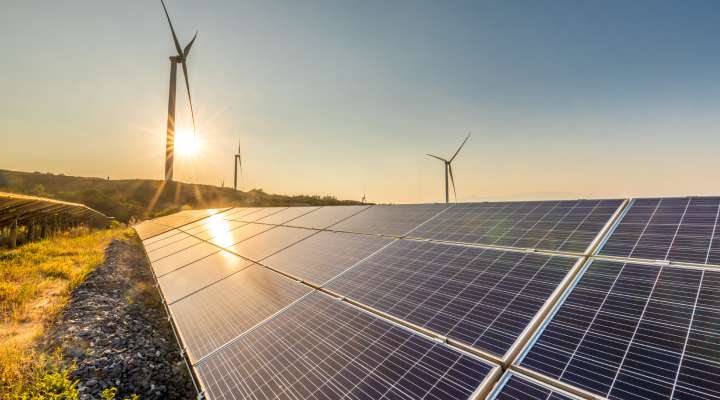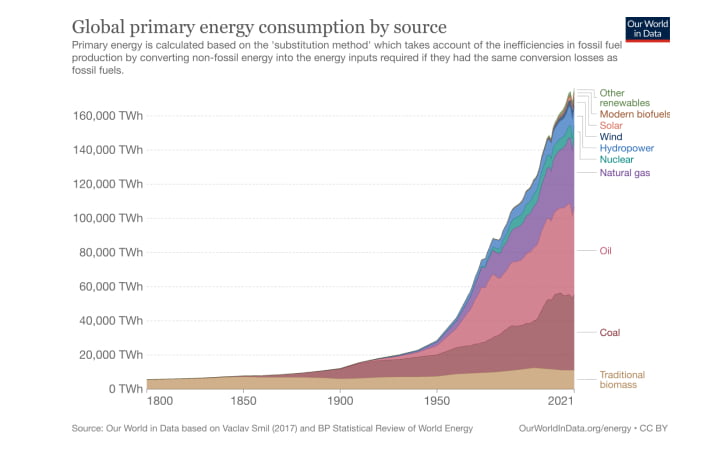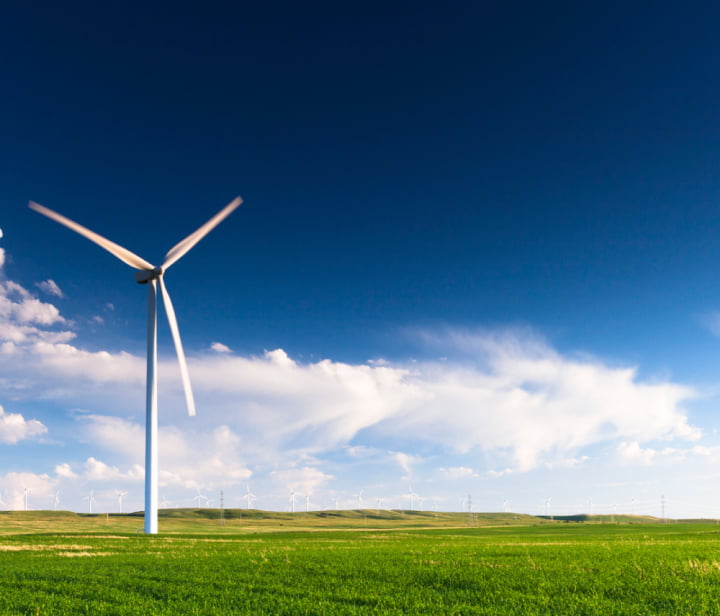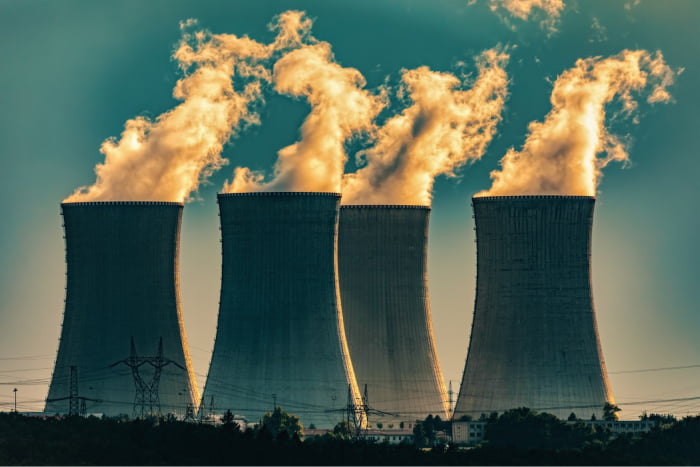
The reality of the clean energy transition
The energy transition and the integral role it plays in managing climate change is one of the greatest challenges we face globally.
Global demand for power is increasing, and many countries have set ambitious net-zero targets. But despite this, national power grids and consumers are unprepared for the widespread electrification needed for the ‘molecule to electron’ transition.
The transition to renewable energy will require significant investment in global infrastructure, innovation in clean energy, and an honest and transparent conversation about the challenges and opportunities it presents.
We need to face some uncomfortable truths.
If we’re serious about limiting global warming by 1.5˚C, our whole relationship with energy must be reset. The cheap fossil fuels that have inspired 200 years of industrial innovation are no longer an option. Eventually, we’ll all benefit from lower electricity prices underpinned by clean energy, but getting there will be challenging and expensive.
Commodities are right at the heart of the energy transition. The markets in which we operate are driving net zero ambitions. From energy itself to the metals needed for EVs, from agricultural products and food to global freight.
Commodities have never been so important.
That’s why it’s vital for commodities producers and traders to have a voice in this conversation. The trends we’re seeing will help policymakers manage the transition in an orderly manner; shutting off fossil fuels too soon before viable replacements are available could cause an energy crisis; leaving it too late could also result in runaway climate change.
The challenges of the energy transition
The energy industry is facing unprecedented challenges as it shifts from fossil fuels to clean energy. The term ‘energy transition’ probably doesn’t do it justice.
Clearly, the world is still reliant on fossil fuels.

As seen in the figure above, in 2021, the world consumed more than 175,000 terawatt-hours (TWh) of energy, and the 3 main fossil fuels (oil, natural gas, and coal) made up 78% or 136,000 TWh. That’s despite decades of tax breaks, subsidies and mandates for renewable energy.
It’s vital to break that reliance.
Climate change is already altering weather patterns and driving more extreme weather events. This, in turn, is having a profound impact on food and water supply, geopolitics and biodiversity.
But climate change isn’t the only existential threat we face. Fossil fuels are finite; not only will they eventually run out, but they’re already getting progressively more expensive to extract. The sustainability of the global economy hangs on us finding alternative clean energy sources that can replace fossil fuels.
The scale of the transition
In 2021, of the 175,000 total TWh of energy consumed, only 25,000 TWh came from the 4 most common sources of clean energy: wind, solar, hydropower and nuclear. That’s just 14%.
Despite the apparent priority given to the energy transition by policymakers, the task is immense.
The focus has been on reducing the use of fossil fuels through measures like carbon trading or taxation and making it harder to explore, extract and transport them rather than investing in clean energy at the scale required to make a difference.
Since the start of the energy crisis in September 2021, €768 billion has been allocated and earmarked across European countries to shield consumers from the rising energy costs, money that would have been much better spent on renewables.
Now we’re reaching crisis point.
The pandemic and the Russian invasion of Ukraine have demonstrated just how fragile the global energy supply is. In the long-term, those geopolitical and societal shifts may accelerate the transition to clean energy but we face significant challenges in the near-term. Getting that balance right will be the most pressing issue we face as part of an orderly energy transition.
The problem with clean energy
The only future we have is powered by clean energy, but we need to answer some important questions about how we get there:
- How do we separate fossil fuels from the global economy without destructive consequences?
- How much investment is needed in global infrastructure to enable the transition?
- How are we going to scale the clean energy we need?
That last one is important to consider in more detail because we’re far from having an answer. We’re still years and trillions of dollars away from clean energy being able to take over fossil fuels as the cheapest and most abundant energy source.

Wind and solar are intermittent sources of energy; they’re only available when the wind blows, or the sun shines. Energy storage technologies, like batteries, will be an important bridge, but they’re currently too inefficient.
Even with the best storage, wind and solar power are not a good alternative to the baseload power currently provided by fossil fuels or nuclear sources.
The baseload dilemma
In a perfect scenario, significant investment and innovation this decade make wind and solar generation more and more efficient, which means we can rely on intermittent renewable sources for our daytime power.
But what happens when most growth in demand for electricity comes at night when the millions of new electric vehicles (EVs) we need are charging at people’s homes?
That’s where renewables will struggle to cope, and we must explore clean energy sources that are much better suited to provide baseload power, like geothermal, hydro, and nuclear.
We also need to be more transparent with consumers.
The transition to clean energy will cost more in the short and medium term. Not only in capital costs like solar panels and heat pumps in homes but higher costs for everything requiring fossil fuels in their production as they become more expensive to extract and renewables are not yet available at the scale we need.
The green mobility transition
Sales of Electric Vehicles (EVs) doubled in 2021 from the previous year to a new record of 6.6 million, and the International Energy Agency (IEA) estimates that 30% of vehicles sold globally by 2030 will be EVs.
Public spending on subsidies and incentives for EVs almost doubled in 2021 to nearly $30 billion. A growing number of countries have pledged to phase out internal combustion engines or have ambitious vehicle electrification targets for the coming decades.

But the rise of EVs raises two crucial points, which are a real challenge for the whole basis behind the energy transition.
No electricity grid was designed to charge the millions of EVs that will be produced in coming years, so how will national grids cope with the exponential demand for power?
And how will we sustainably extract the metals needed to build not just the EVs but much of the technology needed to power the clean energy revolution?
Outdated global electricity grids
The US power grid alone only operates at 40% efficiency. Outdated technology also means power grids are struggling to integrate renewable energy sources.
According to the International Energy Agency, global annual investments in energy sector infrastructure and technologies will need to increase from today’s level of more than $1 trillion to $4 trillion by 2030 to achieve net-zero emissions by 2050.
The challenge of a mining transition
On the second question of sustainable mining, there needs to be more transparency about what’s actually involved in producing the batteries we need to power EVs and other renewable energy technology like solar panels and wind turbines.
EV production needs a significant amount of copper, lithium, nickel, cobalt and manganese. The IEA forecasts that increasing EV battery demand alone will require 50 new lithium mines, 60 nickel mines and 17 cobalt developments by 2030, a huge challenge for an industry that typically takes 15 years or more to develop a project.
These metals are also hard to mine cleanly and efficiently. Innovation and investment are needed to make the extraction more sustainable, but this will inevitably push the prices up further, which will add even more friction to the clean energy transition.
The nuclear option
There are signs that countries are thinking more seriously about nuclear solutions for the first time in decades, and that’s long overdue. Nuclear power must be part of the net zero conversation.
Despite popular opinion, nuclear power is statistically safer than many fossil fuels; it’s clean and produces less radioactive waste than most people think. A recent UN report suggested that nuclear energy has the lowest lifecycle carbon emissions of any energy technology.

For too long public fear and notable disasters like Chernobyl and Fukushima have overshadowed nuclear energy.
Its share of the global primary energy mix is only around 10%, but that’s changing.
- In the US this week, engineers started the first new reactor in the country for 7 years.
- 11 EU countries recently signed an agreement to cooperate closely on nuclear power.
- The UK, South Korea, and Japan are all increasing their nuclear capacity.
- China intends to build more nuclear reactors over the next 15 years—150 in total—than the rest of the world combined has built over the last 35 years.
Conventional nuclear power production is electricity generation powered by steam from a nuclear fission reaction. This process is relatively inefficient and highly water intensive. These nuclear power plants have also been historically expensive and complex to build.
Future nuclear technology
Alternative technologies such as molten salt reactors or small modular reactors (SMRs) could be part of the solution to increase nuclear adoption. SMRs cost less and are quicker to build than conventional large-scale reactors; they also generate less nuclear waste. The International Atomic Energy Agency (IAEA) estimates that there are about 50 SMR designs and concepts globally. Most of them are in various developmental stages.
There’s also the energy panacea of nuclear fusion, which took a big step forward at the end of last year when US scientists announced that they had produced more energy output from a nuclear fusion reaction than the input for the first time in history. Nuclear fusion is the answer to clean (no radioactive waste) and abundant energy, but despite the excitement in December, it’s still decades away from a commercial reality.
The transition to net zero comes with trade-offs and compromises, and nuclear is no different.
It’s the lowest carbon emitter of all our energy sources, but it uses significant water resources and relies on uranium mining for fuel, but it also has to be an important part of our energy mix moving forward.
Are fossil fuels part of the solution?
The unspoken truth of the energy transition is that we can’t phase out fossil fuels before phasing in viable alternatives.
It’s obvious to blame the oil and gas industry for climate change, but our global economic prosperity relies on fossil fuels, historically and in the coming decades. There is no smooth energy transition without a stable supply of fossil fuels.
Despite the best intentions of environmental campaigners, if we phased out fossil fuels immediately, then the humanitarian catastrophe that would follow would dwarf the current impact of climate change.
Economies would crumble, food would rot in fields, half the world would freeze in their houses, and the other half would be exhausted by the heat
Transitioning away from oil, coal and gas should be a clear global priority but moving too quickly, without viable alternatives, risks doing even more damage. And yet this is the path we’re currently on.
Alternatives like biofuels are gaining some traction but come with their own sustainability issues, and some even have worse lifecycle carbon emissions than some fossil fuels.
You can read more in our last article, ‘The Future of Biofuels: Getting the Balance Right’
Without fossil fuels being part of a multilateral solution, the risk is a disorderly transition with far-reaching implications and further costly retail subsidies to manage consumer costs.
Everyone must understand the challenges
How we manage the energy transition in a net zero world is the most important challenge facing the world.
Get it right, and the potential for an economic boom powered by renewable energy is a reality. Get it wrong, and the consequences could set us back for generations.
We know what we must do and why, but how we get there is a question that concerns all of us. It shouldn’t just be left to governments and energy companies; we all have a stake in a future powered by clean energy, and that’s why we all must understand the challenges that lie ahead.
